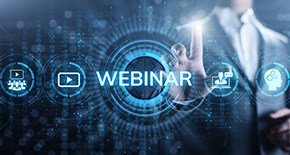Geo-referencing with Leica RTC360's New Target Extraction Workflow
Leica RTC360 now enables real-time target extraction, improving georeferencing accuracy and survey efficiency.

In this article, product experts Guy Cutting, Chiara Francolini, and Peter Glueck breakdown the new geo-referencing and target extraction workflow, made possible by the latest reality capture firmware updates and software improvements.
The new target extraction feature for the Leica RTC360 and Leica RTC360 LT enables surveyors to geo-reference scans in the field, saving time, improving accuracy, and streamlining workflows. This new function adds significant value.
The Leica RTC360 is a fast, agile, precise 3D laser scanner. Trusted by professional surveyors worldwide, it creates coloured 3D point clouds in under two minutes.
The latest firmware update for the RTC360 includes a new feature that allows users to automatically extract and geo-reference targets in the field, ensuring smoother transitions from the field to the office.
Through a holistic integration of hardware and software, the Leica Cyclone FIELD 360 app smoothly transfers data to Leica Cyclone REGISTER 360 PLUS, retaining all transformations made in the field. Keeping 3D reality capture projects accurate, consistent, and efficient.
Addressing survey inefficiencies

Creating point clouds using a terrestrial 3D laser scanner involves stitching together individual scans taken from various locations. Linking these scans together requires accurate georeferencing, which uses physical targets placed throughout the site, such as black and white wall markers. These targets serve as fixed reference points that allow the individual scans to be correctly aligned with real-world coordinates.
The process of extracting and registering these targets is typically done manually in the office, which takes time and can produce errors or misalignments in the point cloud.
How automatic target extraction works
Automatic target extraction in the field is now possible with the RTC360, as seen in this tutorial video and detailed below.


Scan and extract targets
A surveyor scans the environment using the RTC360 scanner, capturing a full dome, colourised 3D point cloud in under two minutes. Then, using the Leica Cyclone FIELD 360 app, they can select targets up to 25 metres away.
The new feature supports multiple target types, including Leica Geosystems black-and-white 4.5-inch and 6-inch targets, and natural targets. The software then automatically extracts the targets and their coordinates. At this time, spherical targets are not yet supported.
Real-time feedback
The Cyclone FIELD 360 app provides immediate feedback on the quality of geo-referencing while in the field. This optimises data quality, enhances the overall efficiency of data capture, gives greater confidence in fieldwork, and reduces site revisits.
Users can also adjust accuracy thresholds to suit the specific needs of each project. This enables a balance between speed and precision, ensuring optimal results for projects that require either high or low accuracy.
Review, manage, and transfer data
Enhanced target management in the results table gives greater control over target selection and validation, streamlining the review process and improving overall quality control in the field.
Users can then seamlessly transfer data to Cyclone REGISTER 360 PLUS for final processing, simplifying the transition between working in the field and the office.
Key benefits of the new target extraction feature
Here is how the new target extraction feature for the RTC360 reduces the time from field capture to final deliverable while maintaining the highest levels of accuracy.
Improved accuracy and quality control
Real-time geo-referencing feedback minimises potential errors by identifying target placement errors on-site, reducing the need for costly rework. Issues can be addressed while still on location, giving surveyors confidence that their data is accurate before leaving the site.
Capturing and validating target coordinates in the field eliminates uncertainty about data quality and provides peace of mind throughout the project.
Less time in the office
By extracting and geo-referencing targets directly in the field, surveyors can save up to 30% of the time typically spent on registration compared to manual target extraction. This produces significant time savings on large projects with multiple setups. In the office, processing becomes simpler in Cyclone REGISTER 360 PLUS – drag, drop, done.

Seamless integration for a smoother workflow
The new target extraction feature is fully embedded in the standard workflow. All transformations done in the field are retained in Cyclone REGISTER 360 PLUS without the need for additional processing. However, users still have the option to re-georeference after import (as part of the Apply Control workflow), providing flexibility to adjust transformations if needed.
It requires no additional licences or plugins, making it easy for surveyors to adopt and integrate into their existing processes at no extra cost. It also adapts to various field conditions, including low-light and reflective environments, allowing for greater versatility.
Moreover, the system preserves all transformations and georeferencing data throughout the process. All data is securely transferred between systems, maintaining accuracy without requiring extra processing. This end-to-end integration enables surveyors to focus on delivering high-quality results.
A new era of surveying efficiency
The new target extraction feature for the RTC360 and RTC360 LT marks a significant advancement in geo-referencing efficiency. Seamlessly integrating Leica hardware and software, it enables real-time target extraction in the field, reducing post-processing time, minimising human error, and enhancing overall data accuracy.
For full details and a step-by-step guide on the geo-referencing workflow in Cyclone FIELD 360, check out our tutorial on our Reality Capture Documentation Hub. We also have support for importing and editing control points in Cyclone REGISTER 360 PLUS.
Keep in touch! Check out additional resources, including our dedicated YouTube channel and LinkedIn group.






























